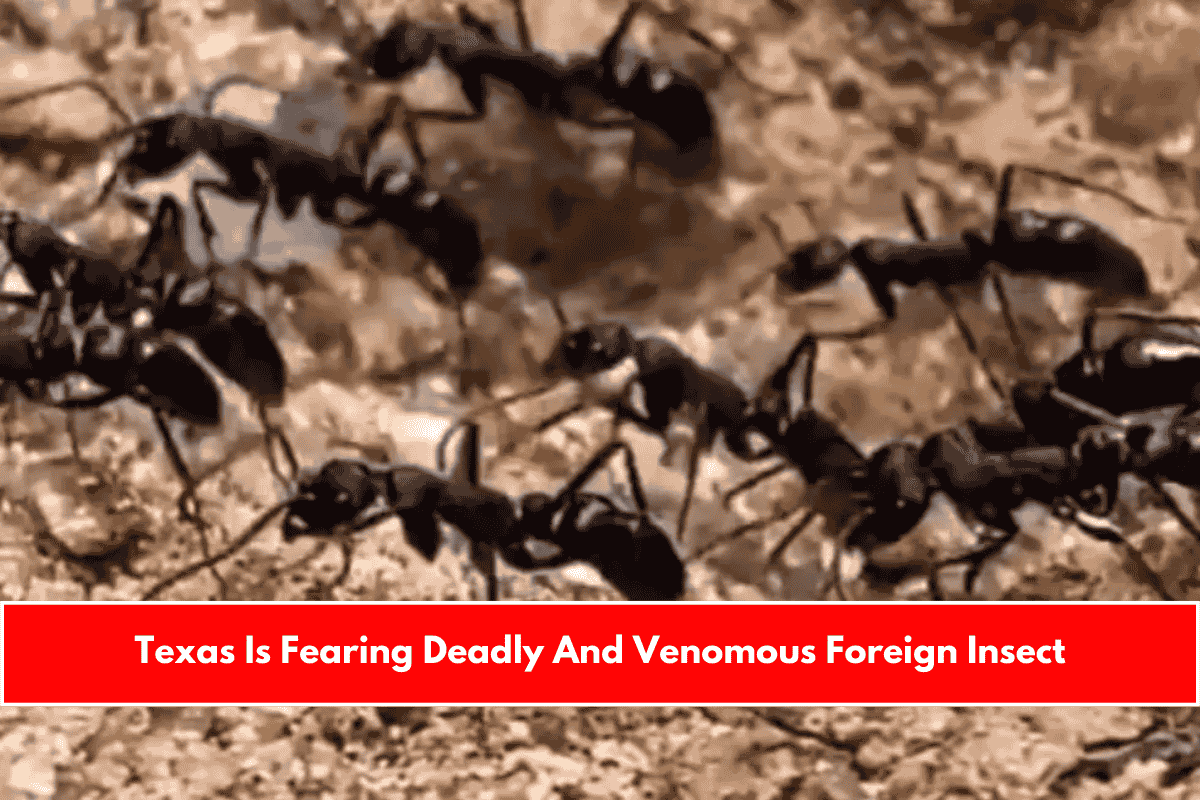Residents of Killeen, Texas and other parts of the state may need to prepare for a serious pest problem this summer. A venomous ant species, known as the Asian needle ant, has recently been found in Texas—and experts are warning that it could be even more dangerous than fire ants.
These ants are already spreading across the Gulf Coast, and reports from other southern states like Georgia show that they can cause severe allergic reactions, even from just one sting.
What Are Asian Needle Ants?
The Asian needle ant (Brachyponera chinensis) is a non-native, invasive species originally from Asia. It was first discovered in the United States years ago, and now it’s spreading rapidly through the southern parts of the country, including Texas.
These ants are not your regular garden variety. Unlike fire ants, whose stings hurt but usually heal fast, Asian needle ant stings can cause severe allergic reactions like anaphylaxis, a life-threatening condition that requires immediate medical attention.
In some cases, just one sting has been known to cause death, especially in people with existing allergies.
Why Are Asian Needle Ants a Problem?
Asian needle ants are not just dangerous to humans—they’re also a big threat to the local environment. Here’s why:
- They outcompete native ant species, including helpful ones that protect gardens and manage pest insects.
- They can live in moist, shaded areas like yards, wooded areas, under logs, or inside walls—making them hard to detect.
- Their presence can disturb the balance of local ecosystems.
- They are aggressive and tend to move in large numbers, making infestations difficult to control once they begin.
In comparison, while fire ants are painful and can swarm aggressively, their sting is usually short-lived, and most people recover quickly.
Asian needle ants, on the other hand, are not only more painful but also medically dangerous.
Where Have They Been Spotted?
Reports confirm that these ants are already spreading through several southern states, including:
- Georgia
- South Carolina
- Alabama
- And now, Texas
The hot and humid weather of Texas makes it an ideal location for these insects to thrive. With summer heat rising, we may see more of these ants showing up in backyards, gardens, and homes across the state.
How to Stay Safe from Asian Needle Ants
Here are a few steps you can take to protect yourself and your family:
- Be cautious in wooded, damp, or shady areas.
- Avoid touching unknown ants or insects—especially if you’re allergic to stings.
- If you suspect an infestation, call a licensed pest control service.
- In case of a sting, seek medical help immediately, especially if you experience swelling, breathing issues, or dizziness.
The Bigger Problem: Invasive Species in Texas
Texas already deals with several invasive species, from zebra mussels to feral hogs. These species damage local habitats, destroy crops, and hurt native wildlife.
Adding the Asian needle ant to that list could make things worse—especially when the insect is both ecologically harmful and medically dangerous.
While ants are normally useful in gardens and soil management, this specific ant species brings real risks. It’s a reminder that not all ants are friendly helpers—and some can be deadly.











Leave a Reply